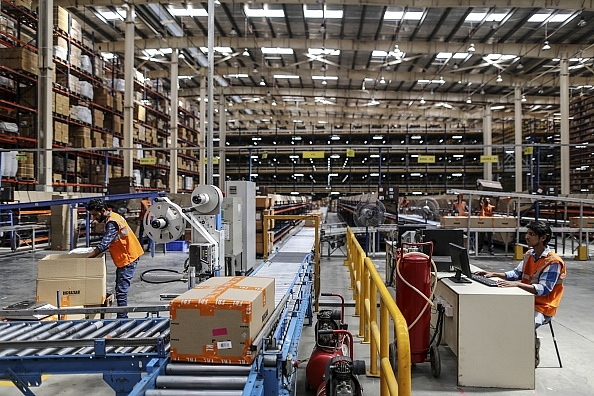Business
Future Group’s HyperCity Acquisition Shows That Brick-N-Mortar Retail Remains Hot
- In India, where logistics is still challenging, brick-and-mortar stores may well emerge as useful delivery points for those who would like to collect their merchandise in person after ordering it online.

A warehouse operated by Future Supply Chain Solutions in Nagpur. (Dhiraj Singh/Bloomberg via Getty Images)
Future Retail’s acquisition of HyperCity, owned by the Shoppers Stop Group, for Rs 655 crore is part and parcel of the overall story of consolidation in both the physical and online retailing spaces. The best part of the HyperCity deal is that it has been paid for largely with paper, with only around Rs 155 crore of it in cash.
Before this deal, Future boss Kishore Biyani bought Bharti Retail in an all-share deal in 2015, and followed it up with smaller acquisitions of Nilgiris, Sangam Direct, and Heritage Foods.
With Aditya Birla’s More chain also said to be on the block, the brick-and-mortar retail space will in future be dominated by the likes of Biyani, D Mart and Reliance Retail, with space perhaps for two more large players, which may depend on whether – or how soon – the government allows FDI in multi-brand retail. In 2014, Tesco bought 50 per cent of Trent Hypermarkets in 2014.
On the online side, investors are pushing for mergers, as Amazon ups the ante in India. In August, Masayoshi Son’s Softbank announced a $2.5 billion investment in Flipkart, India’s No 1 e-tailer, after failing to get Snapdeal to merge with it. Meanwhile, Alibaba of China has invested big in PayTM Mall, which could become the third big player in e-commerce if big Chinese dollars continue to flood into it. Grocery chain Big Basket, which was being wooed earlier by Amazon, is said to be on PayTM Mall and Alibaba’s gunsights too.
Earlier, Flipkart swallowed up Myntra and Jabong, two online fashion garments portals.
Online and offline retailing are becoming hot sectors after being in the doldrums for two reasons: one, as a perceptive analysis in Mint points out, is the sky-high listing price of Avenue Supermarts (owner of the profitable D Mart format), which is today valued at 90 times this year’s likely earnings. This has given Future Retail too a fillip, enabling it to pay for its purchases in hyper-valued shares. While Avenue Supermarts is valued at Rs 69,000 crore, Future Retail is valued at Rs 26,500 crore. Earlier, when physical retailers were in the doldrums, online retailing seemed to be the only game in town. Now, it ain’t so.
All investors in online and offline retail realise that only two or three major players will walk off with the bulk of the customers, since the game belongs to those with the widest product lines, the largest customer bases, and the deepest logistics chains. All of this needs huge investments. Put simply, as I have argued earlier, retailing is a double-or-quits game. If you don’t have the moolah, you might as well sell out, unless you want to be a niche player.
In the US, Amazon’s market capitalisation exceeds that of Wal-Mart’s by a factor of two - $471 billion versus the latter’s $237 billion.
Ultimately, the customer experience is going to be defined not just by logistics, but also a seamless mingling of a brand’s online and offline presence. Just as customers go to retail stores to look at a product and then order it online if it is cheaper, the reverse may also happen in some cases.
In India, where logistics is still challenging, brick-and-mortar stores may well emerge as useful delivery points for those who would like to collect their merchandise in person after ordering it online.
Unlike the US, where Amazon has beaten Wal-Mart in the retail game, in India the chances are that hybrid physical and online models may work better in some cases. Online furniture retailer Pepperfry.com, and spectacles e-tailer Lenskart.com, for example, are opening physical stores and studios to give customers both a sense of the physical product and the convenience of ordering it online.
Biyani, who was once stumped by the kind of valuations received by online retailers, is back in the game. At some point, he will need a big online presence to complement his brick-and-mortal presence. But that’s a story we can’t tell just yet.
Introducing ElectionsHQ + 50 Ground Reports Project
The 2024 elections might seem easy to guess, but there are some important questions that shouldn't be missed.
Do freebies still sway voters? Do people prioritise infrastructure when voting? How will Punjab vote?
The answers to these questions provide great insights into where we, as a country, are headed in the years to come.
Swarajya is starting a project with an aim to do 50 solid ground stories and a smart commentary service on WhatsApp, a one-of-a-kind. We'd love your support during this election season.
Click below to contribute.
Latest